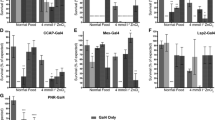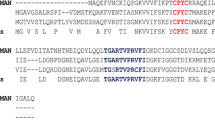Abstract
The vinegar fly Drosophila melanogaster is proving to be an excellent system to study the in vivo regulation of the essential metal copper. The Ctr1A/B and DmATP7 copper transport proteins have well-established roles in Drosophila copper uptake and efflux, respectively. Both Ctr1A and DmATP7 are essential genes, whereas Ctr1B mutants are viable but die in excess or depleted copper conditions. Less is known about the tissue-specific requirements for these three genes and how they interact to maintain copper homeostasis in different cell types. Here, we use targeted overexpression and suppression of each gene to examine these questions in vivo. We find that in the epidermal cells that form the adult thoracic and abdominal cuticle, Ctr1A plays a major role in copper uptake, whereas Ctr1B plays only a minor supporting role and DmATP7, as previously shown, is essential for transfer of copper to the trans-Golgi network. We also find that the copper chaperone dSco1 appears necessary for supplying the mitochondria with copper in these tissues. In contrast, in the developing Drosophila eye, DmATP7 appears to be non-essential unless copper levels in these cells are artificially elevated. Again, Ctr1A is the main copper uptake gene in the eye, but when ectopically expressed, Ctr1B has greater phenotypic effects than Ctr1A. Furthermore, Ctr1A and Ctr1B show a dramatic synergistic interaction, indicating their relationship is more complicated than a simply additive one and that they may in fact act cooperatively for optimal copper import.





Similar content being viewed by others
References
Turski ML, Thiele DJ (2007) J Biol Chem 282:24017–24026
Selvaraj A, Balamurugan K, Yepiskoposyan H, Zhou H, Egli D, Georgiev O, Thiele DJ, Schaffner W (2005) Genes Dev 19:891–896
Zhou H, Cadigan KM, Thiele DJ (2003) J Biol Chem 278:48210–48218
Burke R, Commons E, Camakaris J (2008) Int J Biochem Cell Biol 40:1850–1860
Norgate M, Lee E, Southon A, Farlow A, Batterham P, Camakaris J, Burke R (2006) Mol Biol Cell 17:475–484
Dietzl G, Chen D, Schnorrer F, Su KC, Barinova Y, Fellner M, Gasser B, Kinsey K, Oppel S, Scheiblauer S, Couto A, Marra V, Keleman K, Dickson BJ (2007) Nature 448:151–156
Phillips MD, Thomas GH (2006) J Cell Sci 119:1361–1370
Bischof J, Maeda RK, Hediger M, Karch F, Basler K (2007) Proc Natl Acad Sci USA 104:3312–3317
Leary SC, Cobine PA, Kaufman BA, Guercin GH, Mattman A, Palaty J, Lockitch G, Winge DR, Rustin P, Horvath R, Shoubridge EA (2007) Cell Metab 5:9–20
Balamurugan K, Egli D, Hua H, Rajaram R, Seisenbacher G, Georgiev O, Schaffner W (2007) EMBO J 26:1035–1044
Hua H, Georgiev O, Schaffner W, Steiger D (2009) J Biol Inorg Chem 15:107–113
Southon A, Farlow A, Norgate M, Burke R, Camakaris J (2008) J Exp Biol 211:709–716
Acknowledgments
This research was supported by an Australian Research Council Discovery Grant and a National Health and Medical Research Council Project Grant. We thank the Vienna Drosophila RNAi Center, Konrad Basler (Zurich University) and Walter Schaffner (Zurich University) for fly stocks.
Author information
Authors and Affiliations
Corresponding author
Rights and permissions
About this article
Cite this article
Binks, T., Lye, J.C., Camakaris, J. et al. Tissue-specific interplay between copper uptake and efflux in Drosophila . J Biol Inorg Chem 15, 621–628 (2010). https://doi.org/10.1007/s00775-010-0629-y
Received:
Accepted:
Published:
Issue Date:
DOI: https://doi.org/10.1007/s00775-010-0629-y




